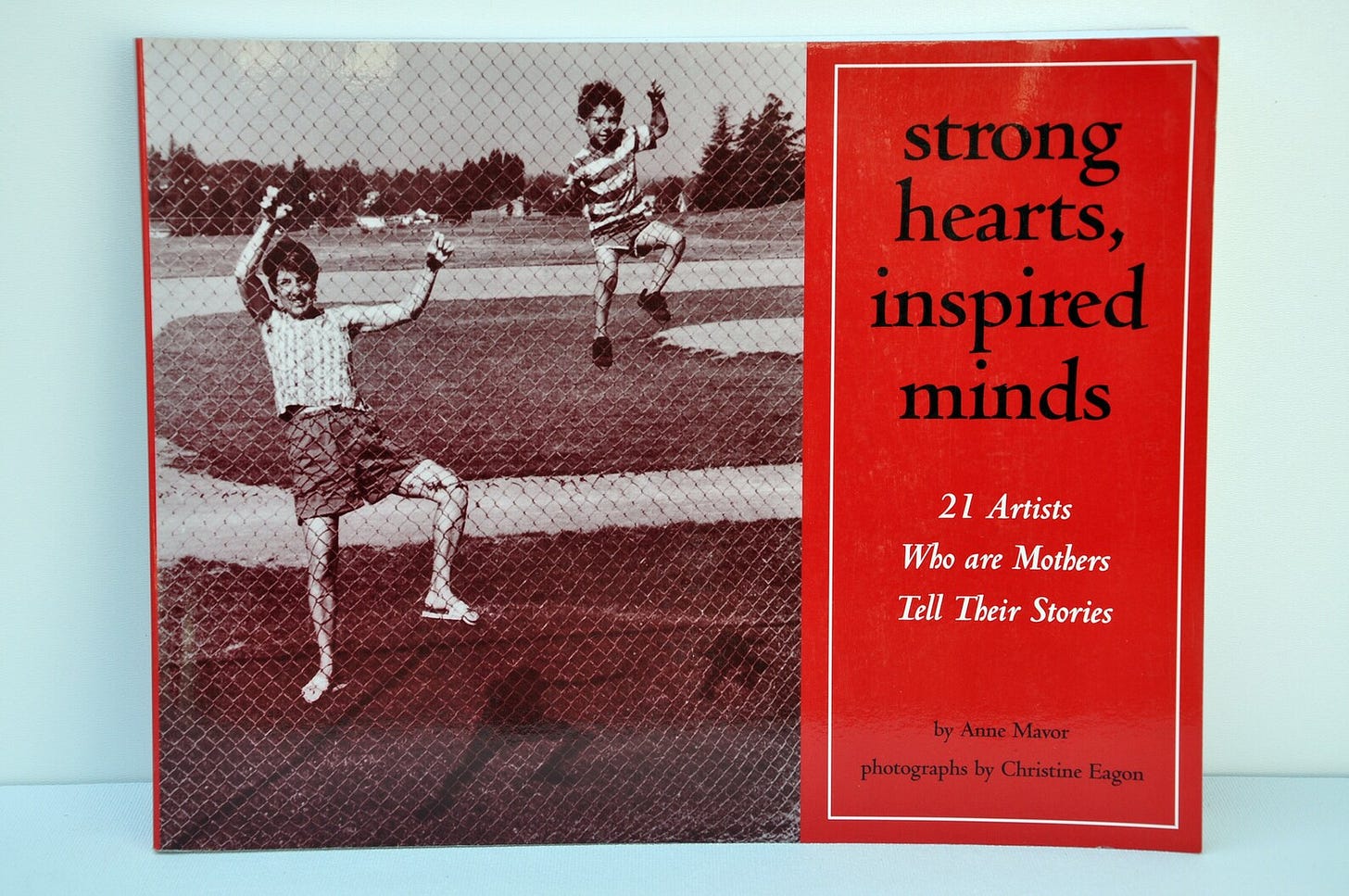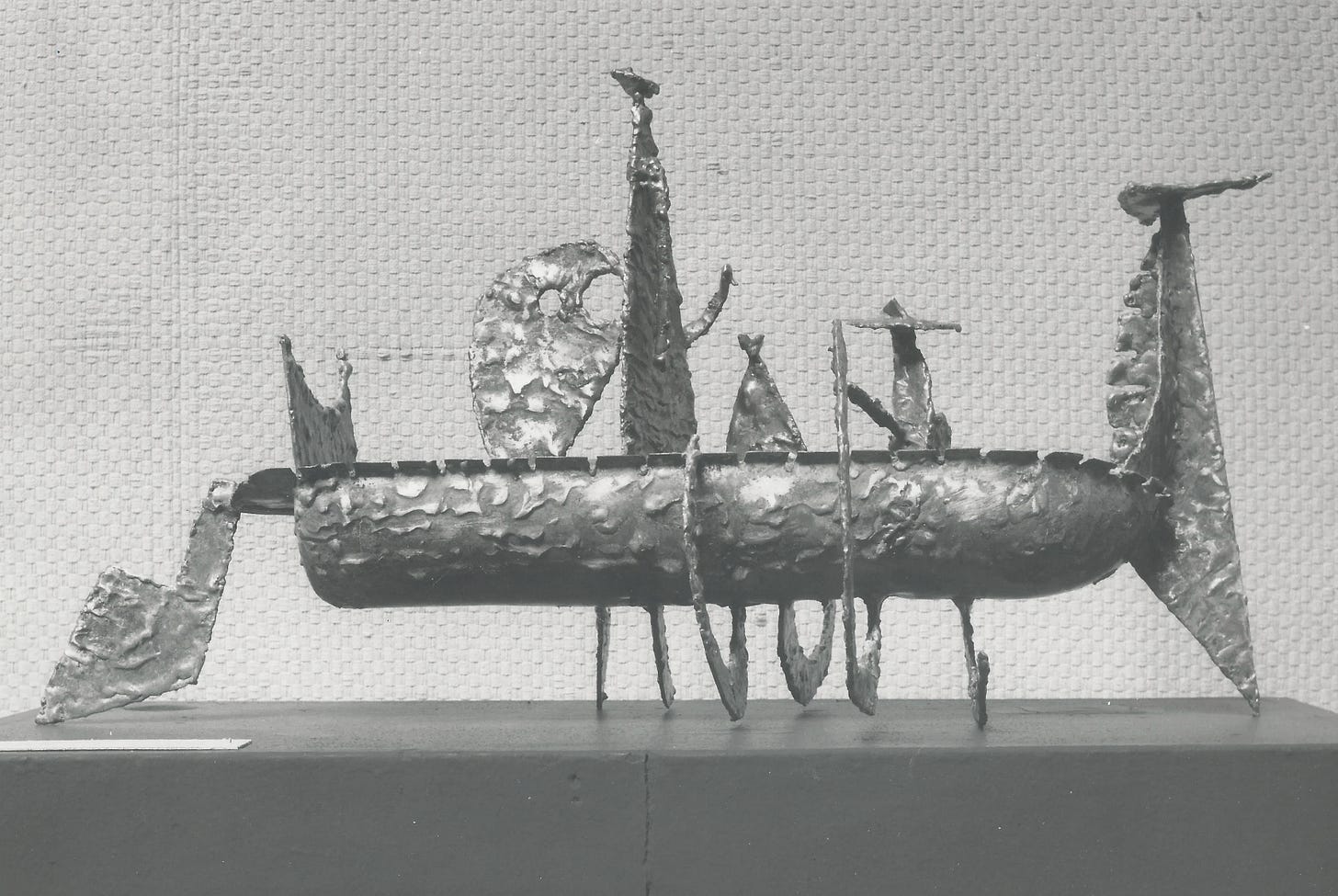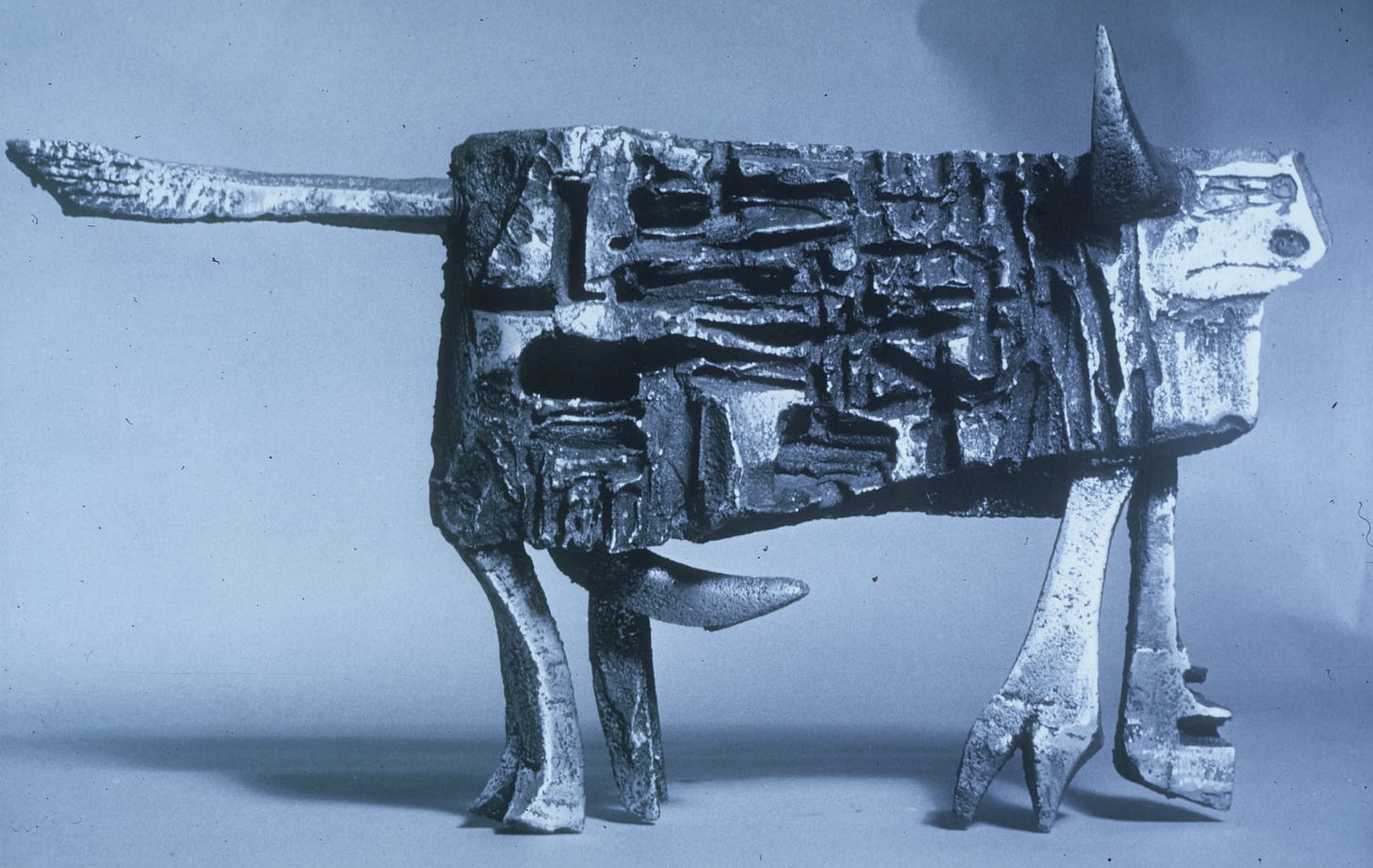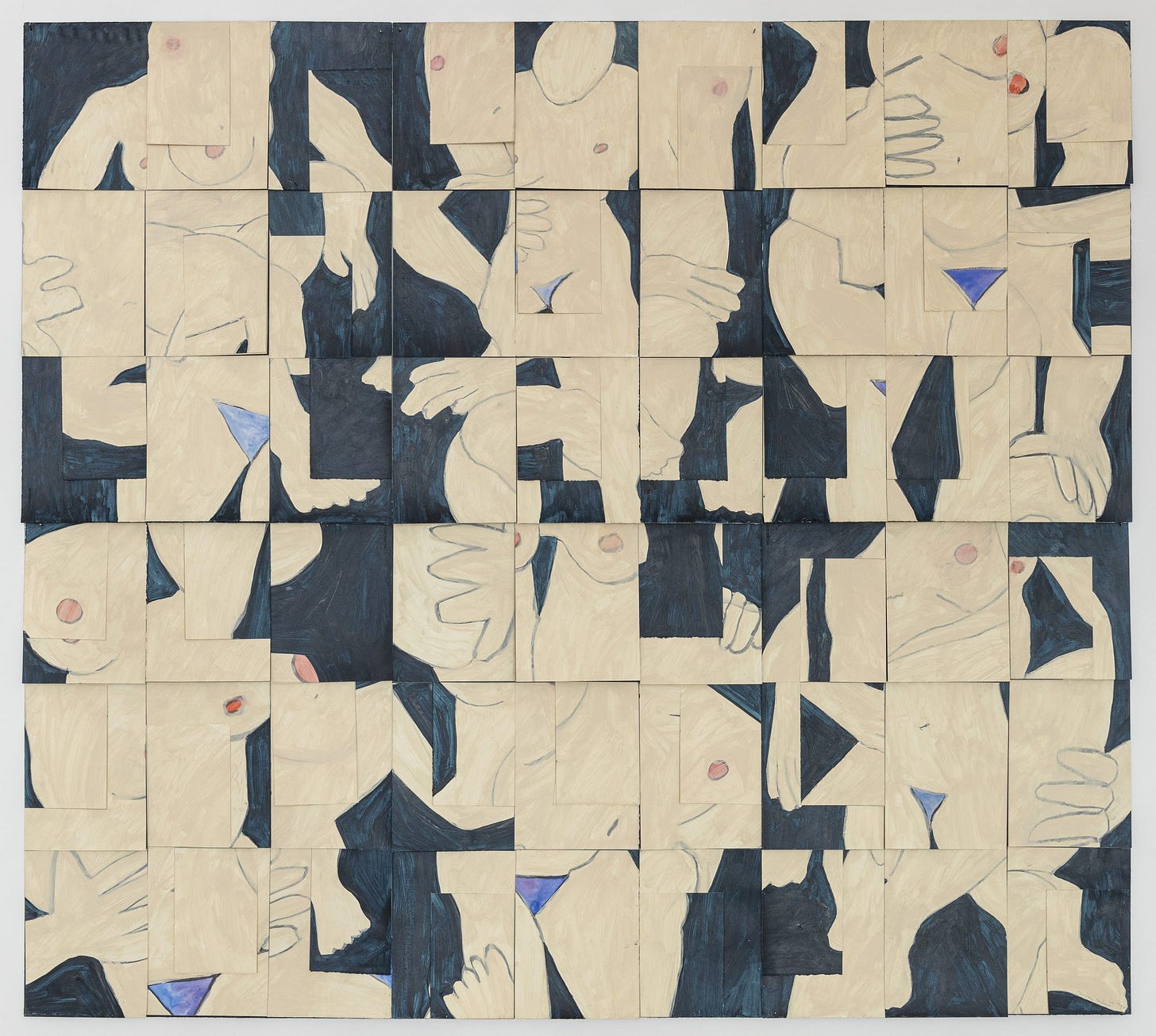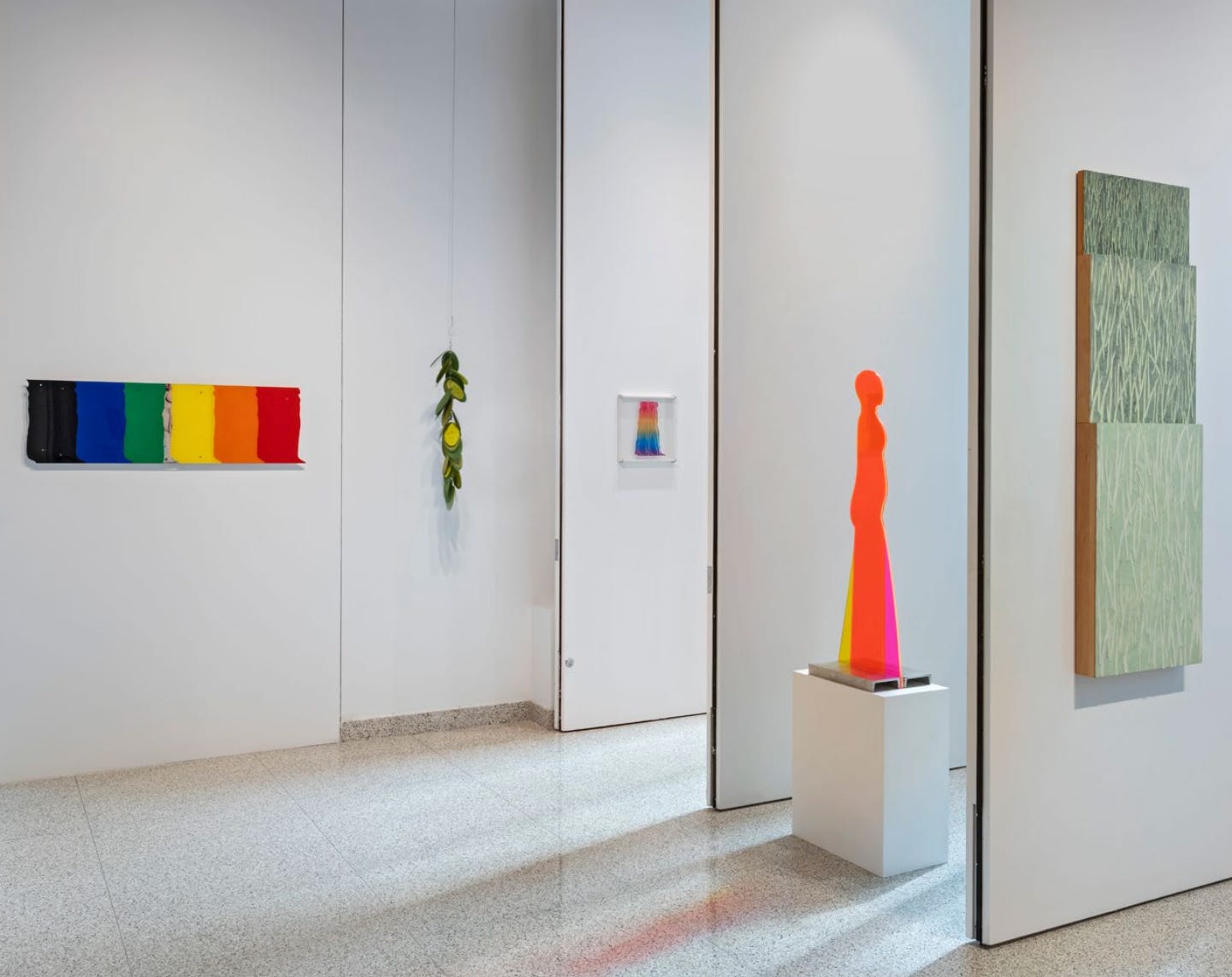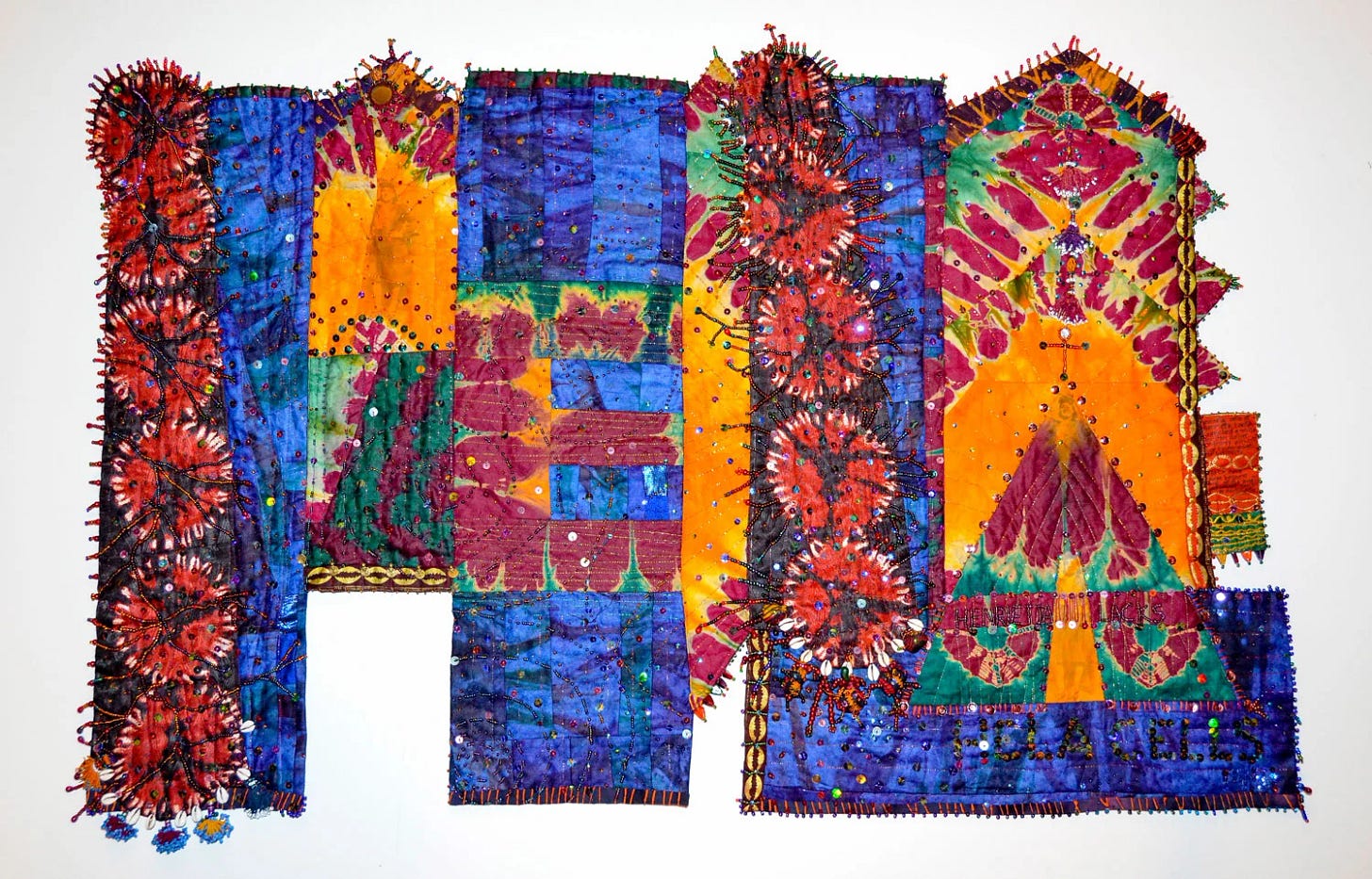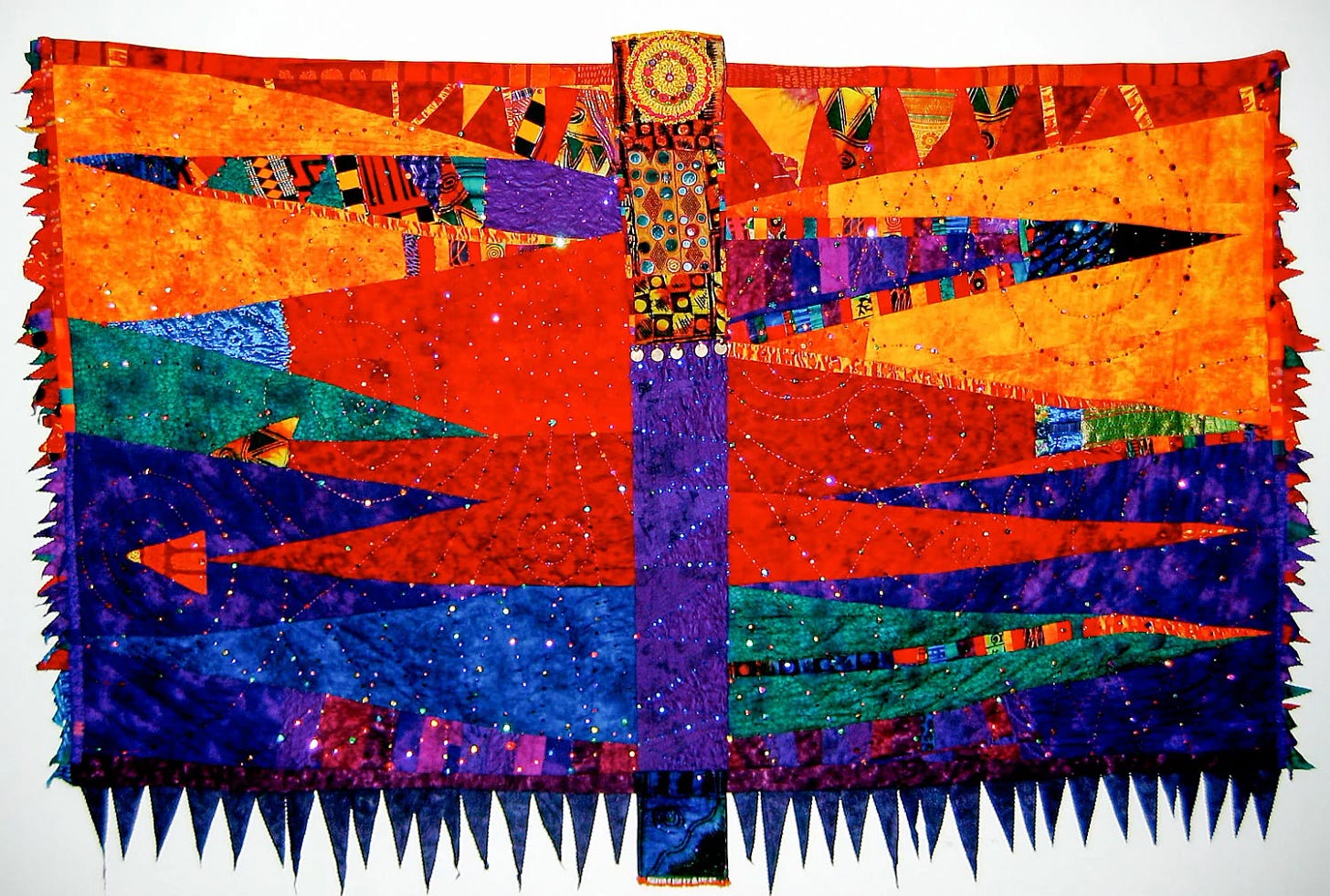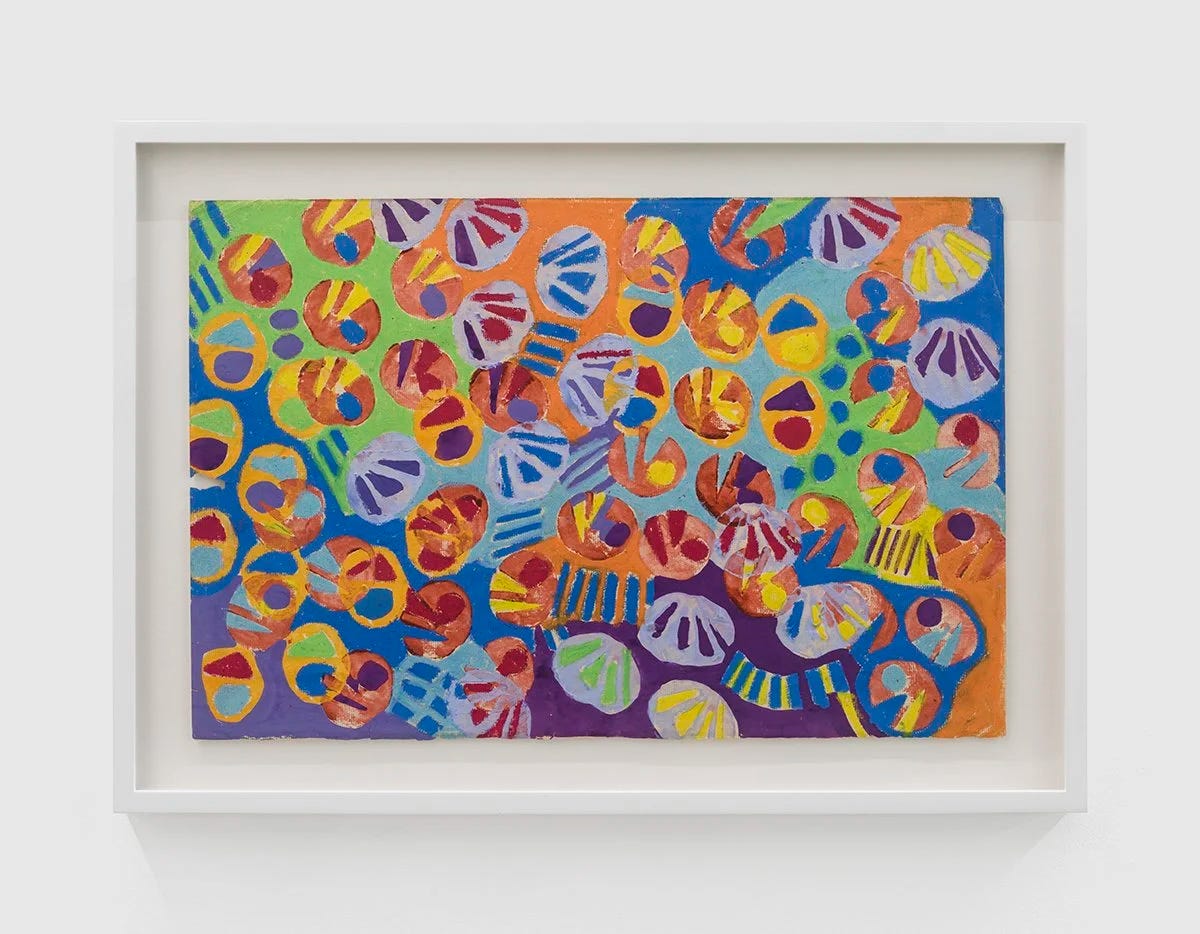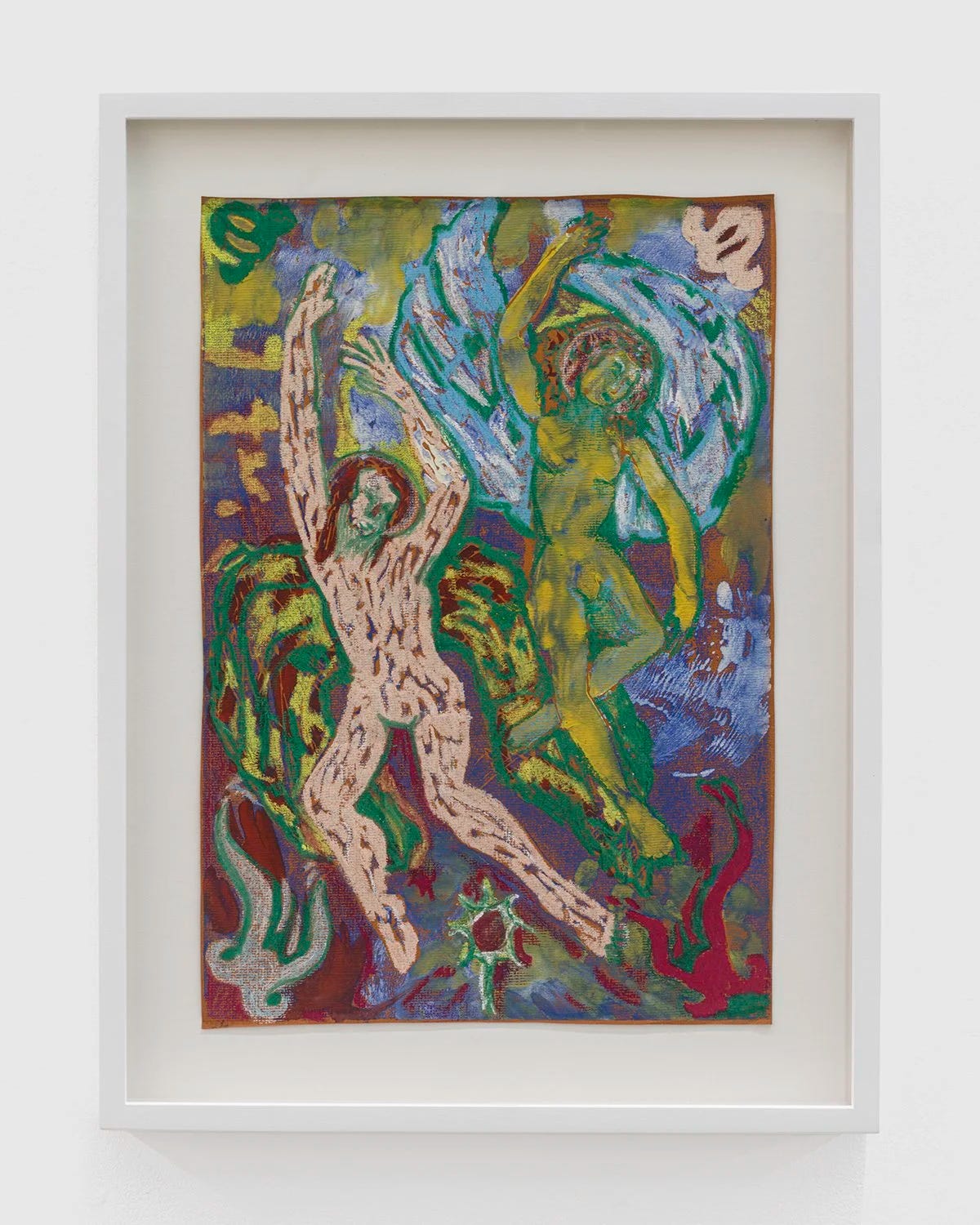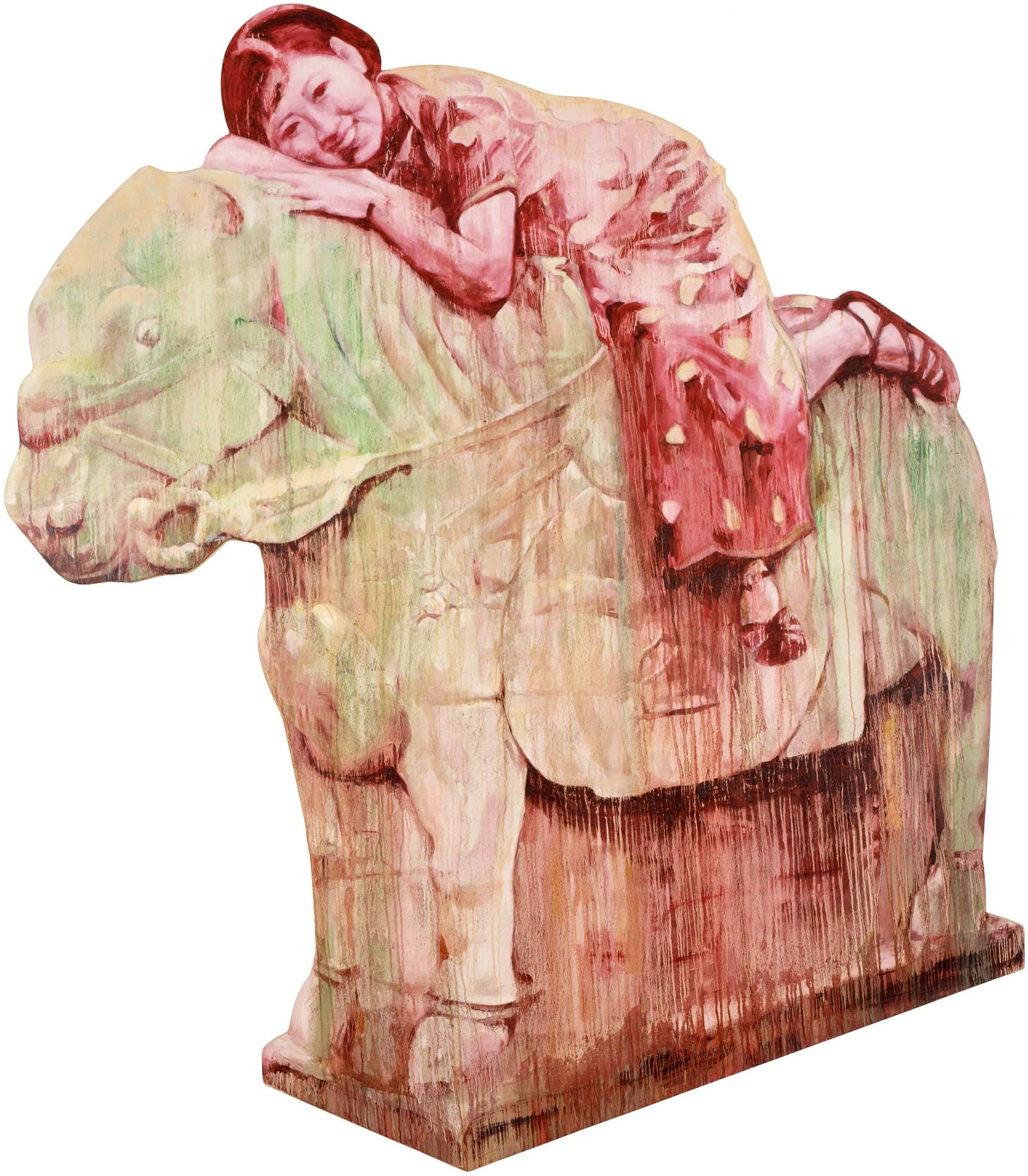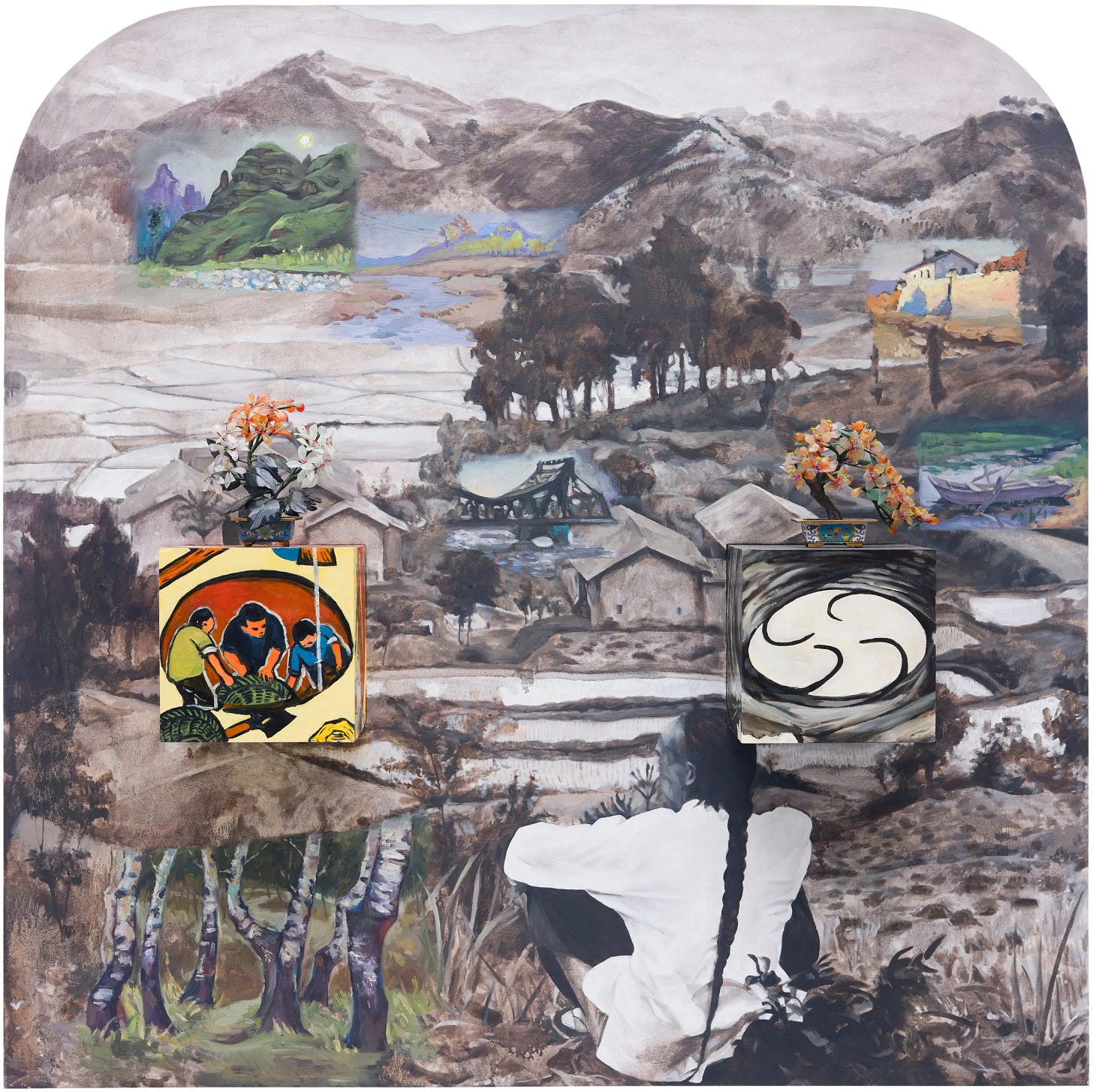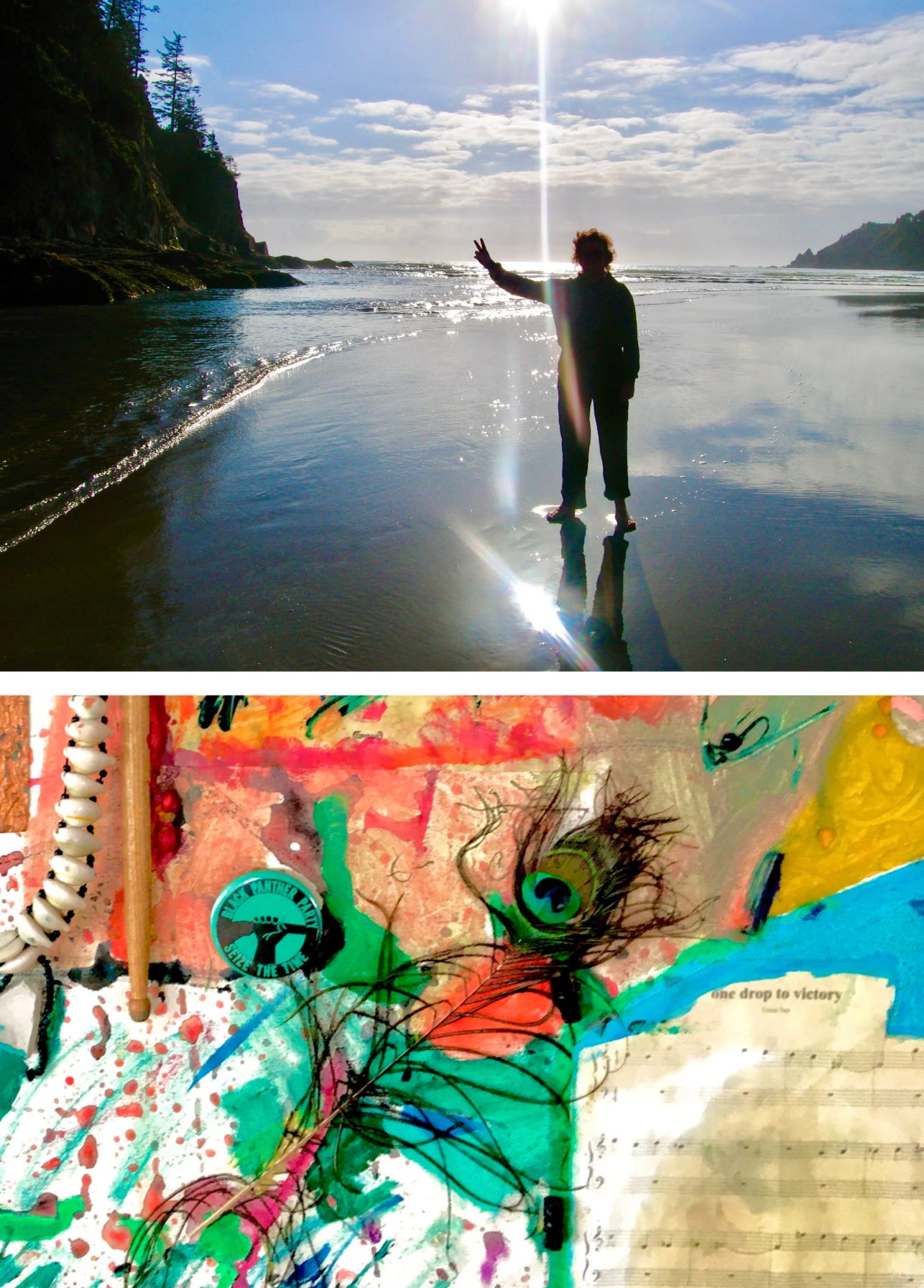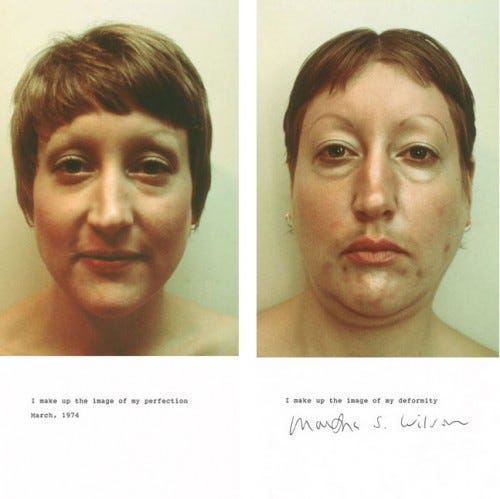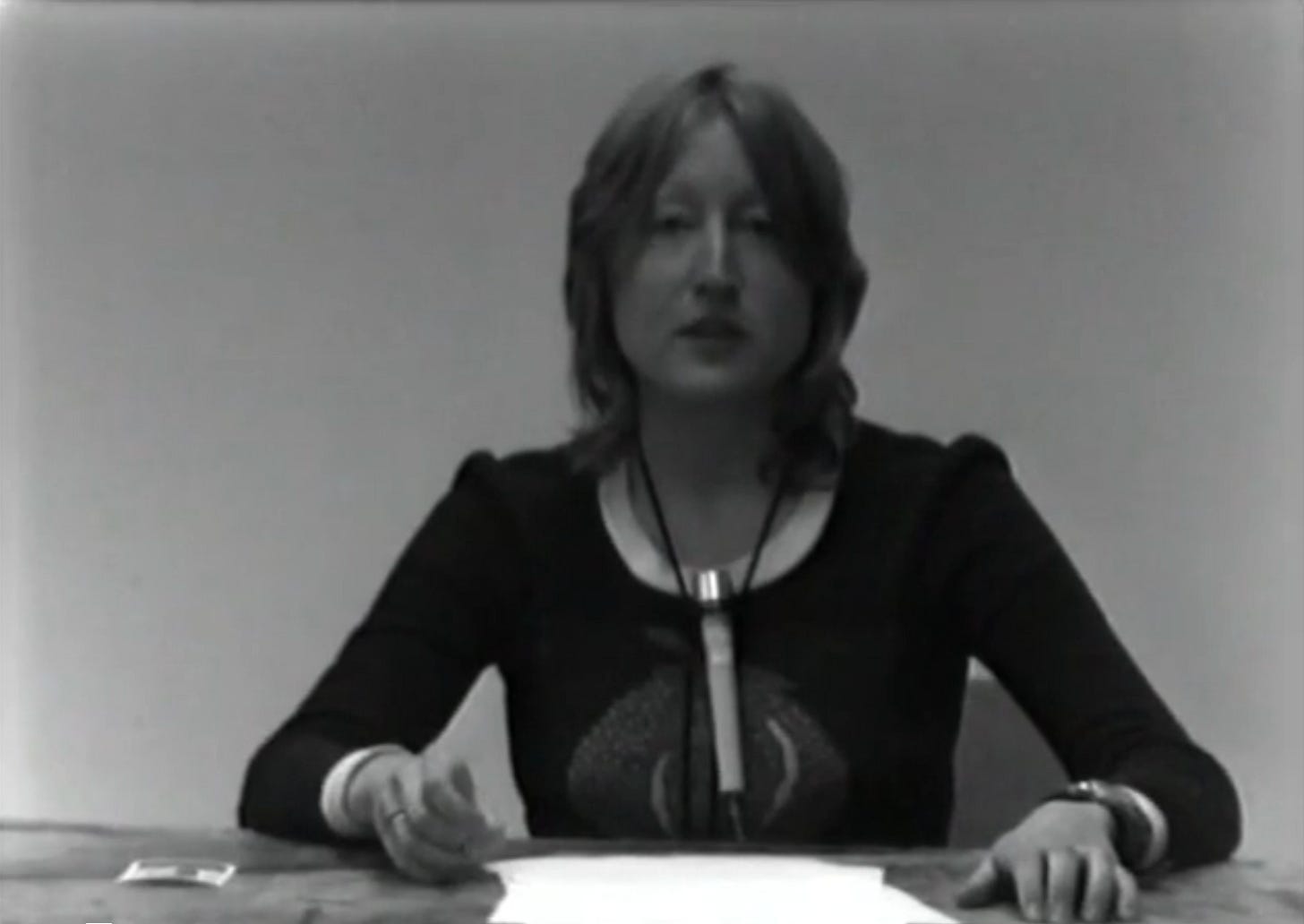In 1993 the artist Anne Mavor had a conundrum: she wanted to know what other women like her were doing and thinking as artists and mothers. She wanted to know how they did it and figure out if there was any way to balance the demands on both her work and her family. So she wrote to 21 artists who were mothers and asked them to tell their stories. In the asking she found friends through their honesty, truths, frustrations and joy. In continuing from my last newsletter, I wanted to share this book and look up some of the artists today to see if they were still making work. I was curious what had happened to them in their careers? Most of the women were still working, some had success and a few I couldn’t find. I chose a selection of the visual artists from the group and I’m including some quotes from the book as well.
“When I tell my students it’s very hard for a woman to be an artist and have children, I say it very seriously. Even if you have assistance, the sheer number of details that you have to keep in mind definitely interferes with the wholehearted concentration that you need to be able to go through the long haul and develop a personal body of work.”
“Did you think about how your son would affect your artwork?” “I had this idea that I could manage anything and everything” she says simply and quietly. “In my life I had already coped with a great deal. It didn’t seem that it would really be a problem. But shortly after that, Bob [Rauschenberg] and I divorced and then I was a single mother. That was a little bit harder. When Christopher was real small, Bob wasn’t even in New York with us, so I really was bringing him up by myself at that point. Bob went back to Black Mountain to teach and he travelled around. For a lot of Christopher’s growing up, he was in New York, but he was very focussed on his art life. He saw Christopher regularly. but I really took the responsibility for Chris. They are very close now, real good buddies. But I had the daily responsibility”
“Well just last year I had a revelation about that. I remembered in school whenever they would go around the room and ask ‘What do you want to be when you grow up?’ I would raise my hand an say ‘artist’, but in my mind I was thinking ‘When my children are asked what their parents do, I want them to say their mother was an artist.’ So somewhere in there I wanted children although I resisted.”
“At that moment it hit me that I could be a mom and I would be a good mom. For seventeen years, it appeared as if I wasn’t going to get any children. And I was afraid if I didn’t get them, I probably wouldn’t end up married. I would just go off and do my thing. As you can see I’m doing it anyway. The only thing that keeps me anchored is the fact that I go home every night and make dinner and take care of homework and wash babies and do Christmas.”
“I don’t believe there’s a choice in the world that you have to pay a price for,” she says bluntly. “You just have to make the choice. I made several choices in my life when I was young, probably unconsciously. I made that choice to leave my mother and move to Beijing when I was ten. I still don’t know why. But there’s a voice that gave me courage to do it.
“Now I make choices more consciously and think about pros and cons. But I still make risky choices. You cannot predict everything. Even if you don’t make the greatest choice you can still gain something if you take responsibility for it. I cannot say I always made the best choices. But I made them all because of what I cam and they formed who I am today. I have survived and have learned a lot and gained a lot and lost some. But it’s fine”
Susan is happy to be a mother, but she is also ambivalent. That ambivalence lives alongside wonder. “There is a part of it that is very natural to me,” she explains. “I like children and I like their reality and living in proximity with a child. I like the nurturing qualities of it. I enjoy Jack a great dal. It’s an intense emotional experience. There’s all this incredible emotional range that you get from mothering. I found out that there is this whole group of people called mothers that I have a relationship with that I didn’t before.
“What I’ve had a hard time with is the conflict between my first child, art, and my second child, Jack. I can’t leave my first baby, I have to keep my first baby going, too.”
Even so, she has been able to use her creativity in her mothering. “I’m good at tuning into where he is and responding to him. I think that has encouraged his creativity, It’s been real organic. I don’t want to push him into anything. I’m fun and I’m good at creating adventures.
“The clock started ticking really loudly when I turned forty. It was already ticking, I could hear it. It is the idea that you’re going to be the last one. There isn’t anybody after you and it’s just you and this sky. My parents are both dead and it’s just… emptiness.
”Its about hope. If you have a child, it seems to me you’re saying, ‘Look, the future is looking bad, but what we can do, we just have to leap into the unknown and go for it.’ It’s exactly the same thing as art. It’s an act of faith and hope.


